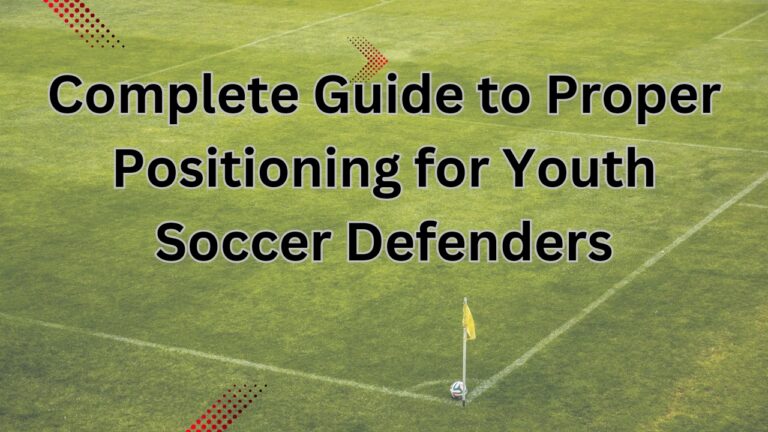Football is a fast-paced game that requires players to be able to move quickly and maintain control of the ball. For offensive players, fast dribbling skills are essential for beating defenders and creating scoring opportunities. Mastering a few key techniques can help you improve your dribbling speed and agility with the ball.
Perfect Your Footwork for Faster Dribbling
Quick footwork is the foundation for fast dribbling. Fast feet allow you to make many small touches to keep the ball close. Here are some drills to enhance footwork:
- Footwork ladders: Set up a ladder on the ground with rungs made of tape or rope. Run through it leading with your right foot in the first square, then your left in the next. Go as fast as you can while maintaining coordination.
- Hopscotch patterns: Draw squares or shapes on the ground with chalk. Jump in and out of them on one or both feet. Again focus on speed and coordination in your foot movements.
- Jumping drills: Simple vertical jumps, tuck jumps, front and side hops – these all build explosive power to translate into quick dribbling bursts.
The key is making your feet swift enough to control the ball comfortably at high speeds. Start slow and then increase foot speed with precision. Faster footwork equals faster dribbling ability.
Use Cones and Obstacles in Dribbling Drills
Setting up cones and obstacles in practice drills is an excellent way to boost dribbling speed and ball control. Some effective drills include:
- Cone dribbling: Arrange cones in straight lines, zig-zags, squares, or other patterns. Weave in and out while controlling the ball at increasing speeds. Change direction when approaching each cone.
- Pole weaving: Set up poles or other obstacles in a line. Dash back and forth between them, rolling the ball from left to right and keeping it tight.
- Ladder stepovers: Place the ball beside a ladder footwork ladder. As you step in and out of the ladder, roll the ball from inside to the outside of your foot each time.
The key is reacting and adapting your dribbling quickly to the patterns. Mimicking movements needed to maneuver around defenders. Start at slower speeds focusing on technique, then speed up once you have control. Setting up new and varied drills keeps your dribbling skills sharp.
Control the Ball Close to Your Feet
Keeping the ball near your feet is crucial for fast dribbling. Here are some tips:
- Make many small, quick touches rather than big kicks so you can react and change direction faster.
- Keep your knees bent and weight slightly forward over the ball. This helps you make quicker movements.
- Use the inside and outside of both feet to move the ball back and forth. This enables tight control from all angles.
- Tap the ball gently with your laces in the direction you want to go. Accelerate gradually as you get more comfortable.
- Keep your head up to see the field while dribbling. Your feet should handle the ball without having to look down.
Maintaining close control is key. The closer the ball, the quicker your movements and direction changes can be executed. Start at slower speeds and focus on keeping the ball glued to your feet before building up pace.
Increase Dribbling Speed Gradually
When trying to improve dribbling speed, it’s important to build up pace steadily over time. Here are some methods:
- Begin with slow dribbling drills focusing strictly on technique and control. Master the basics first.
- Once you have good technique, start increasing your speed slightly during drills. Go only as fast as you can while maintaining control.
- Push yourself to go a little quicker during each practice session as your skills improve. Keep challenging your top speed.
- Periodically time yourself dribbling at top speed between two cones. Aim to beat your time while keeping control.
- Practice sprints while dribbling to improve your fast running with the ball. Do intervals of slow jogging and fast bursting.
- Visualize yourself dribbling at game speed during practice. This mental rehearsal helps translate into physical execution.
Building up pace steadily allows you to adapt to faster speeds while keeping the ball glued to your feet. Be patient and focus on technique before trying to dribble at top speeds too quickly.
Use Feints, Stepovers, and Other Moves
Incorporating feints, stepovers, and other dribbling moves can help you beat defenders with speed and agility. Useful techniques include:
- Stepovers: Rapidly step over the ball alternating feet to confuse defenders. Do multiple stepovers to sell the fake before bursting away.
- Feints: Fakes like stutter steps, shoulder fakes, and head fakes make defenders lean the wrong way.
- Scissors: Hop to make quick “scissor” cuts and accelerate off in a new direction. Defenders get crossed up by the hops.
- Chops: Chop or slice the ball quickly behind your planted leg to dash away at an angle. Defenders expect you to keep going in the same direction.
- Inside/Outside: Roll the ball from inside your foot to outside and vice versa fluidly while maintaining speed. Keeps defenders guessing.
- Drag Backs: Pull the ball back quickly with the sole, then burst forward. This stops momentum briefly to fake out defenders.
Mastering these moves takes practice, but it allows you to change pace and direction unexpectedly. Use feints efficiently without getting fancy or losing momentum.
Perform Dribbling Drills Under Pressure
Being able to maintain control while dribbling at speed against opponents is critical. Useful practice drills include:
- Have a friend or coach try to take the ball from you during dribbling drills. Focus on shielding the ball and changing direction.
- Practice dribbling courses with defenders standing as obstacles. Go at game speed and react quickly to their movements.
- Set up mannequins or cones as stationary defenders. Practice feints and moves to evade them.
- Visualize real defenders when dribbling alone. Picture their actions and work on responses.
- Play competitive 1v1 and 2v2 drills focused on dribbling past opponents. Apply skills in game-like scenarios.
- Play full scrimmages, but make it a focus to attempt multiple creative dribbles. Take risks and try to beat defenders.
The more you rehearse dribbling under pressure, the more instinctive your ball control and footwork will become. Don’t be afraid to challenge yourself against actual defenders.
Train for Quick Changes in Direction
The ability to quickly cut, pivot, and change direction while dribbling can help you beat defenders. Useful drills include:
- Set up a series of cones. Sprint towards one and pivot off in a new direction at each one.
- Have a partner or coach call out commands. React quickly to suddenly change direction.
- Run through zigzag patterns, alternating sides, to pivot around each cone.
- Practice stopping fast then exploding in a new path. This starts and stops momentum.
- Do shuttle runs by sprinting to a line, stopping, changing direction, and sprinting back.
- Visualize changing direction sharply during normal dribbling. This engrains the movements.
- Physically repeat the words “Cut! Pivot! Burst!” as you do those motions.
Your ability to change direction on a dime keeps defenders on their toes. Drills that rehearse reacting swiftly and rerouting your momentum build this dribbling skill.
Conclusion
Developing lightning-fast dribbling skills takes time and practice, but can give you a real edge on the football field. Mastering footwork, close control, change of direction, feints, and other techniques will make you more elusive against defenders. Be sure to build up speed gradually as you improve.
Dribbling drills with cones, obstacles, and opponents prepare you for game situations. With patience and daily training focused on fast footwork and ball control, you can become an expert dribbler. Sharp dribbling opens up new passing lanes and gives you more options to beat defenders one-on-one and penetrate the defense.
Read More: Master Ball Control: 5 Must-Know Soccer Drills for Improving Individual Skills
Author





